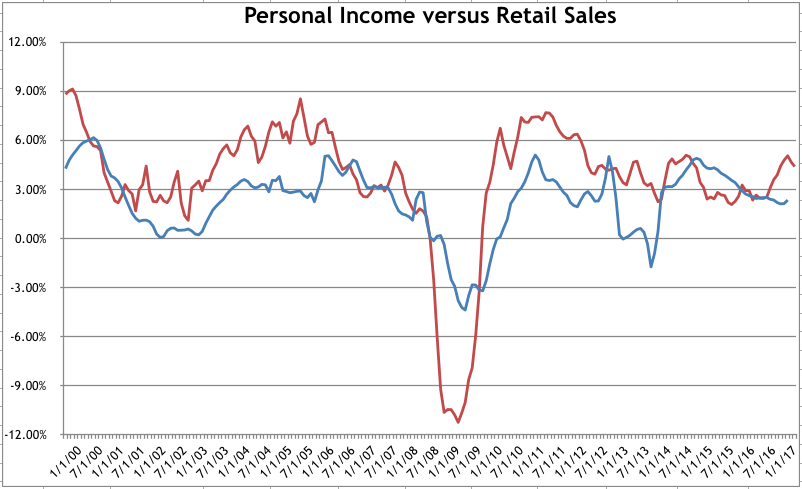Driving With ADHD: A Comprehensive Guide To Vehicle Safety

Table of Contents
Understanding the Challenges of Driving with ADHD
ADHD, or Attention-Deficit/Hyperactivity Disorder, impacts executive functions crucial for safe driving. Symptoms like inattention, impulsivity, and hyperactivity directly translate into driving-related difficulties.
- Difficulty maintaining attention on the road: This can lead to missed traffic signals, slower reaction times, and difficulty staying within lanes. Distractions become amplified, making even routine drives challenging.
- Impulsive lane changes or speeding: The impulsive nature of ADHD can result in sudden, unsafe maneuvers. This risk is heightened in stressful driving situations.
- Problems with spatial awareness and judging distances: This can lead to difficulty merging, parking, and navigating tight spaces. Accurate distance perception is crucial for avoiding collisions.
- Challenges with following traffic rules consistently: Consistent adherence to traffic laws may be difficult due to inattention or impulsivity, leading to potential violations.
- Increased risk of accidents due to inattention or impulsivity: The cumulative effect of these challenges increases the likelihood of accidents, necessitating proactive safety measures.
Beyond the core symptoms, the emotional toll of driving with ADHD shouldn't be underestimated. Increased stress and anxiety before, during, and after driving are common experiences. This added mental burden can further exacerbate existing challenges.
Strategies for Safer Driving with ADHD
Improving driving safety with ADHD involves a multi-pronged approach combining medication management, vehicle modifications, behavioral strategies, and professional support.
Medication Management
Medication plays a significant role for many individuals in managing ADHD symptoms and improving focus, thus enhancing driving safety. Stimulant and non-stimulant medications are commonly prescribed. However, it's crucial to understand that some medications can cause drowsiness or other side effects that might impact driving ability. Always adhere strictly to your doctor's instructions and discuss potential side effects on your driving.
- Regular medication intake as prescribed: Consistency is key to experiencing the full benefits of your medication.
- Awareness of potential side effects and their impact on driving: Be vigilant about any side effects, particularly drowsiness or impaired judgment, and avoid driving if affected.
- Consulting with your doctor about medication adjustments: Open communication with your physician is crucial to find the optimal medication and dosage for your needs and driving safety.
Vehicle Modifications
Adapting your vehicle can significantly aid in safer driving. Modern technology offers several assistive driving features to mitigate the challenges of ADHD.
- Using adaptive cruise control: Maintains a safe following distance, reducing the risk of rear-end collisions.
- Installing lane-departure warning systems: Alerts you if you drift out of your lane, helping maintain lane position.
- Adjusting mirrors for optimal visibility: Ensuring clear visibility minimizes blind spots and improves spatial awareness.
- Using GPS navigation for route planning: Reduces cognitive load by eliminating the need for map reading, allowing for better focus on driving.
Behavioral Strategies and Techniques
Implementing behavioral strategies can empower you to take control of your driving experience and enhance your safety.
- Practicing mindful driving, focusing on the present moment: Consciously directing your attention to the road and surroundings helps minimize distractions.
- Breaking long drives into shorter segments with rest stops: Regular breaks help combat fatigue and maintain focus.
- Avoiding driving when fatigued or stressed: Driving under duress significantly impairs judgment and reaction time.
- Using checklists and reminders for pre-driving checks: A simple checklist ensures you perform essential pre-driving routines consistently.
- Practicing safe driving techniques regularly: Regular practice strengthens safe driving habits and improves response time.
Seeking Professional Support
Don't hesitate to seek professional help. Therapists and driving instructors specializing in ADHD can provide tailored support and guidance.
- Cognitive behavioral therapy (CBT) to address impulsivity and inattention: CBT helps develop coping mechanisms for impulsive behaviors and improves attention skills.
- Driving assessments and retraining programs: These programs offer individualized instruction and feedback to improve driving skills and address specific challenges.
- Support groups for individuals with ADHD and driving challenges: Connecting with others facing similar challenges provides valuable emotional support and shared experiences.
Legal Considerations for Driving with ADHD
Navigating legal aspects is crucial for responsible driving with ADHD. Requirements vary by location, but transparency is key.
- Understanding local driving regulations related to ADHD: Familiarize yourself with any specific regulations concerning ADHD and driving in your area.
- Honesty and transparency when discussing ADHD with insurance companies (where applicable): Openly discussing your ADHD with your insurance provider can prevent complications in the event of an accident.
- Considering the potential impact of ADHD on insurance premiums: Your insurance premiums might be affected, but honesty ensures you’re adequately covered.
Driving Safely with ADHD – A Path Forward
Driving with ADHD presents unique challenges, but with proactive strategies and support, you can significantly enhance your driving safety. By implementing the strategies outlined – medication management, vehicle modifications, behavioral techniques, and professional support – you can improve your driving with ADHD and build confidence behind the wheel. Remember, consistent effort and self-awareness are key. Take the steps outlined in this guide to improve your driving with ADHD and prioritize safe driving practices. For further resources and support, consider contacting your physician or seeking out local ADHD support groups and driving rehabilitation programs. Start improving your driving with ADHD today!

Featured Posts
-
 Canadians Head To Polls Amidst Us Tariff And Annexation Concerns
Apr 29, 2025
Canadians Head To Polls Amidst Us Tariff And Annexation Concerns
Apr 29, 2025 -
 Economists Predict Rate Cuts Amidst Weak Retail Sales Data
Apr 29, 2025
Economists Predict Rate Cuts Amidst Weak Retail Sales Data
Apr 29, 2025 -
 Rekordiniai Porsche Pardavimai Lietuvoje 2024 M
Apr 29, 2025
Rekordiniai Porsche Pardavimai Lietuvoje 2024 M
Apr 29, 2025 -
 Russias Military Posture Implications For European Stability
Apr 29, 2025
Russias Military Posture Implications For European Stability
Apr 29, 2025 -
 Conquer Adhd Symptoms Naturally A Comprehensive Guide To Holistic Methods
Apr 29, 2025
Conquer Adhd Symptoms Naturally A Comprehensive Guide To Holistic Methods
Apr 29, 2025
Latest Posts
-
 Thomas Muellers 25 Year Allianz Arena Legacy A Heartfelt Farewell
May 12, 2025
Thomas Muellers 25 Year Allianz Arena Legacy A Heartfelt Farewell
May 12, 2025 -
 Uncovering Alex Winters Early Work Pre Freaked Mtv Sketches
May 12, 2025
Uncovering Alex Winters Early Work Pre Freaked Mtv Sketches
May 12, 2025 -
 The End Of An Era Thomas Muellers Farewell Match At Allianz Arena
May 12, 2025
The End Of An Era Thomas Muellers Farewell Match At Allianz Arena
May 12, 2025 -
 The Forgotten Mtv Comedy Shows Alex Winter Created Before Freaked
May 12, 2025
The Forgotten Mtv Comedy Shows Alex Winter Created Before Freaked
May 12, 2025 -
 25 Years At Allianz Arena Thomas Muellers Emotional Goodbye
May 12, 2025
25 Years At Allianz Arena Thomas Muellers Emotional Goodbye
May 12, 2025
